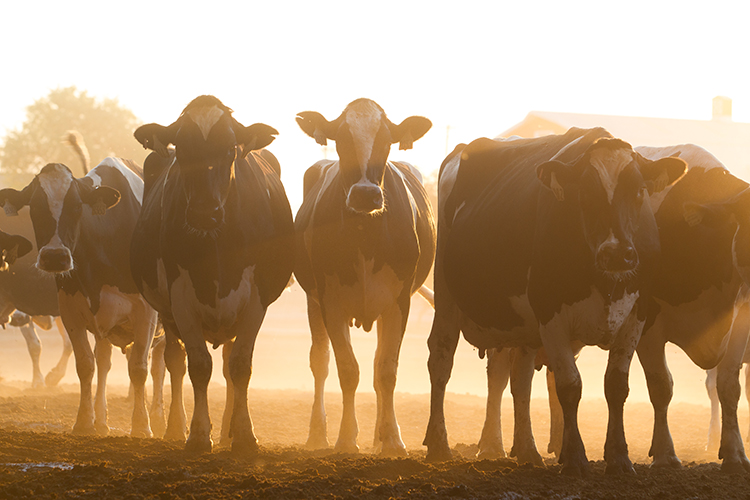
When dry matter intake drops, so can milk production. This undesirable combination often occurs during the summer months as cows change their feeding behavior to help keep cool. High-performing dairy cows generate their own metabolic heat, which means they may feel the stress of heat even before it’s noticeable to people.
When temperatures start to rise, producers can make quick – and inexpensive – changes to keep feed intake and milk production up.

1. Increase water availability. Make sure clean water is readily available. Check water trough refresh rates. Ensure lactating cows have access to a minimum of three inches of linear trough space per lactating cow and clean the water troughs at least once per week.
2. Feed when it is cool. If possible, feed twice daily to help maximize intakes. Ideally, more of the total mixed ration (TMR) should be offered at the coolest part of the day – usually around 8 p.m. to 8 a.m.
3. Guard against sorting. Properly mix rations to discourage forage sorting and perform regular TMR push-ups to encourage access and feed intake.
4. Don’t feed hot silage. Aerobically unstable silage can cause the entire ration to heat. Cattle simply don’t want to eat hot feed in the summer. Plus, hot silage is a sign that valuable nutrients have been lost. To minimize spoilage, feed out at a rate fast enough to avoid heating and discard all moldy silage. For future harvests, use an inoculant containing the high dose-rate Lactobacillus buchneri NCIMB 40788 to help improve the aerobic stability of silage if heating is a consistent challenge.
5. Maximize digestion. For lactating cows, always select the most digestible forages and strive to maximize the inclusion of forage neutral detergent fiber (NDF) within the appetite limit of each pen. Check the particle size distribution profile using a Penn State Forage Particle Separator to ensure the distribution is within guidelines. Adding an active dry yeast (ADY) probiotic, such as Saccharomyces cerevisiae CNCM I-1077, can improve rumen function and increase fiber digestion in lactating dairy cows.
Peer-reviewed published research showed lactating cows supplemented with S. cerevisiae CNCM I-1077 had 7.6 percent higher feed efficiency under severe heat stress conditions.1 In addition, the inclusion of this rumen specific yeast in dairy diets increased milk fat and milk protein yield by 4 percent.1 Research also showed cows that were exposed to heat stress showed improvement in rumination activity, fiber degradation and manure consistency.2,3,4
Probiotics are especially helpful for producers experiencing production and health challenges during times of heat stress. When heat stress occurs, normal rumen and immune function are disrupted. This worsens the already significant negative effects of heat stress in dairy cattle.
But it doesn’t have to be that way. With simple changes, you can help cows continue to perform even under heat stress conditions.
To learn more, visit lallemandanimalnutrition.com.
1 Perdomo et al., 2020. Effect of feeding live yeast at two dosages of performance and feeding behavior of dairy cows under heat stress. J. Dairy Sci. 103:325-339.
2 Lallemand Animal Nutrition internal data. 2013. University of Bologna, Italy.
3 De Ondarza et al., 2010. Multiple-study analysis of the effect of live yeast on milk yield, milk component content and yield and feed efficiency. Prof Anim. Sci. 26:661–666.
4 Lallemand Animal Nutrition internal data. 2013. University of Teheran, Iran.



